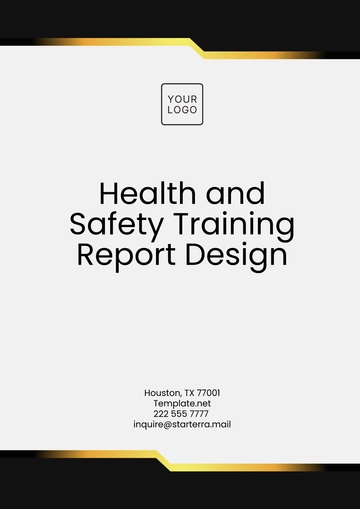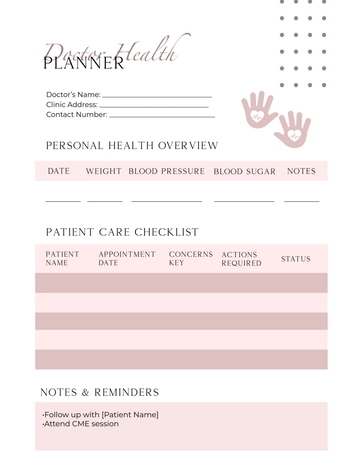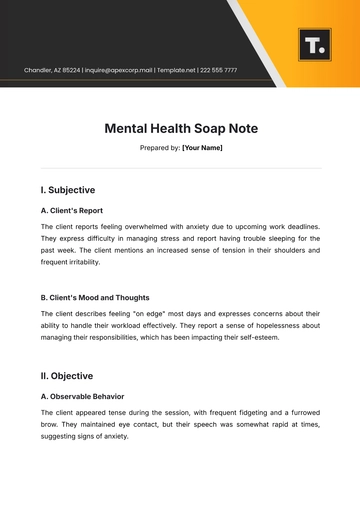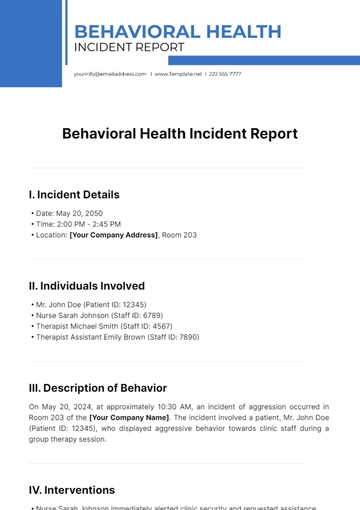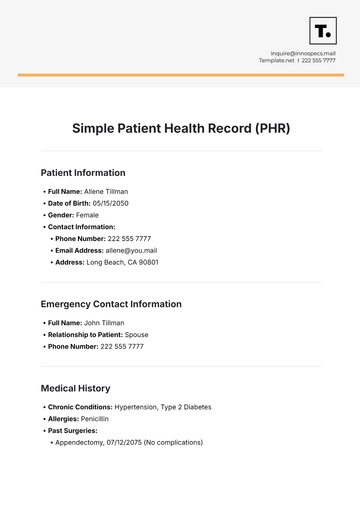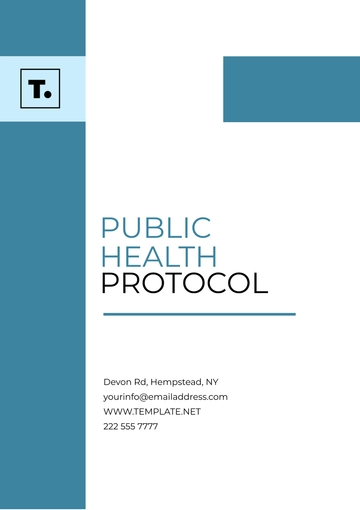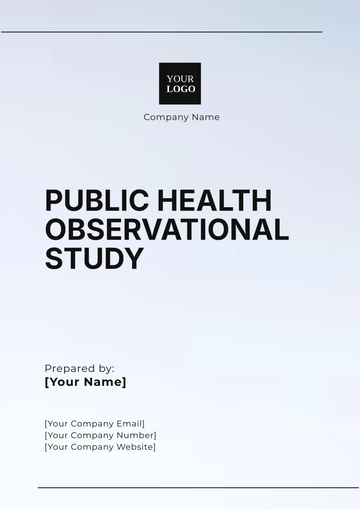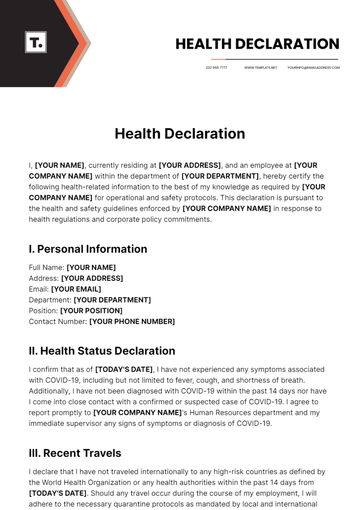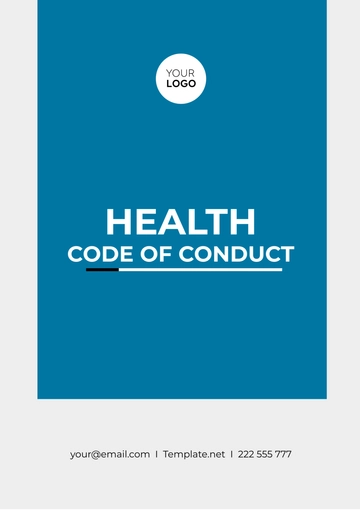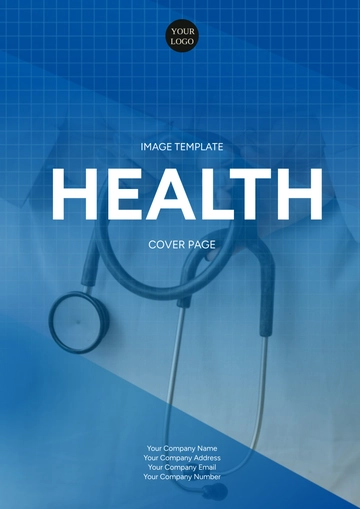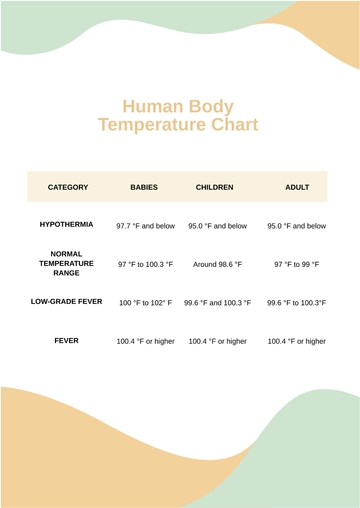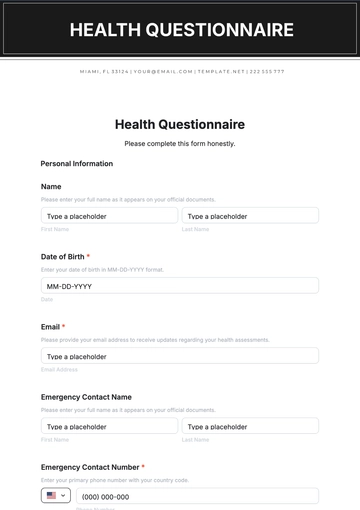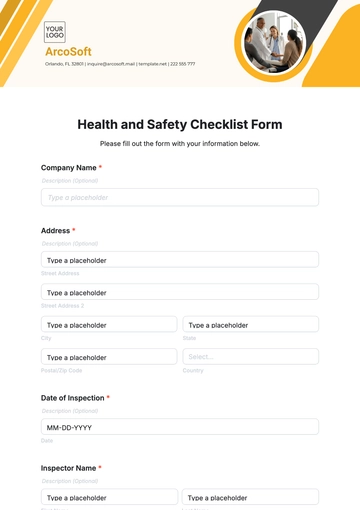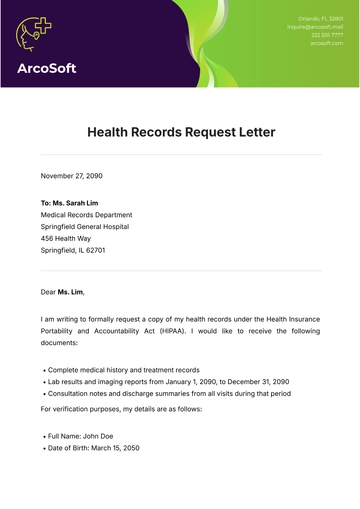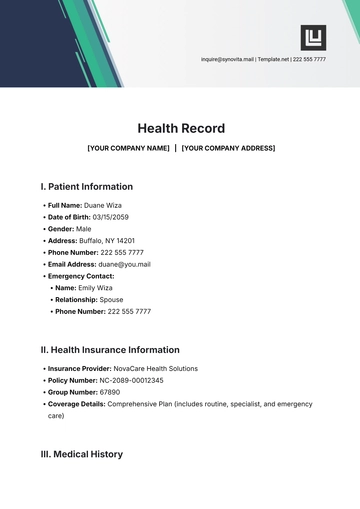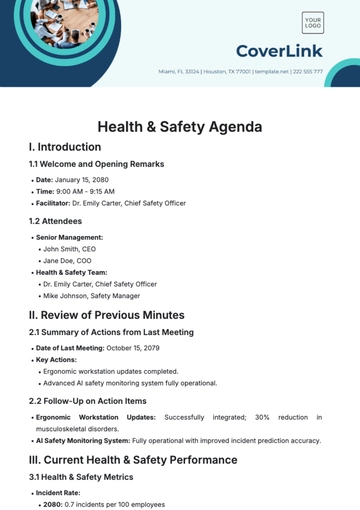Free Health & Safety Training Management Journal
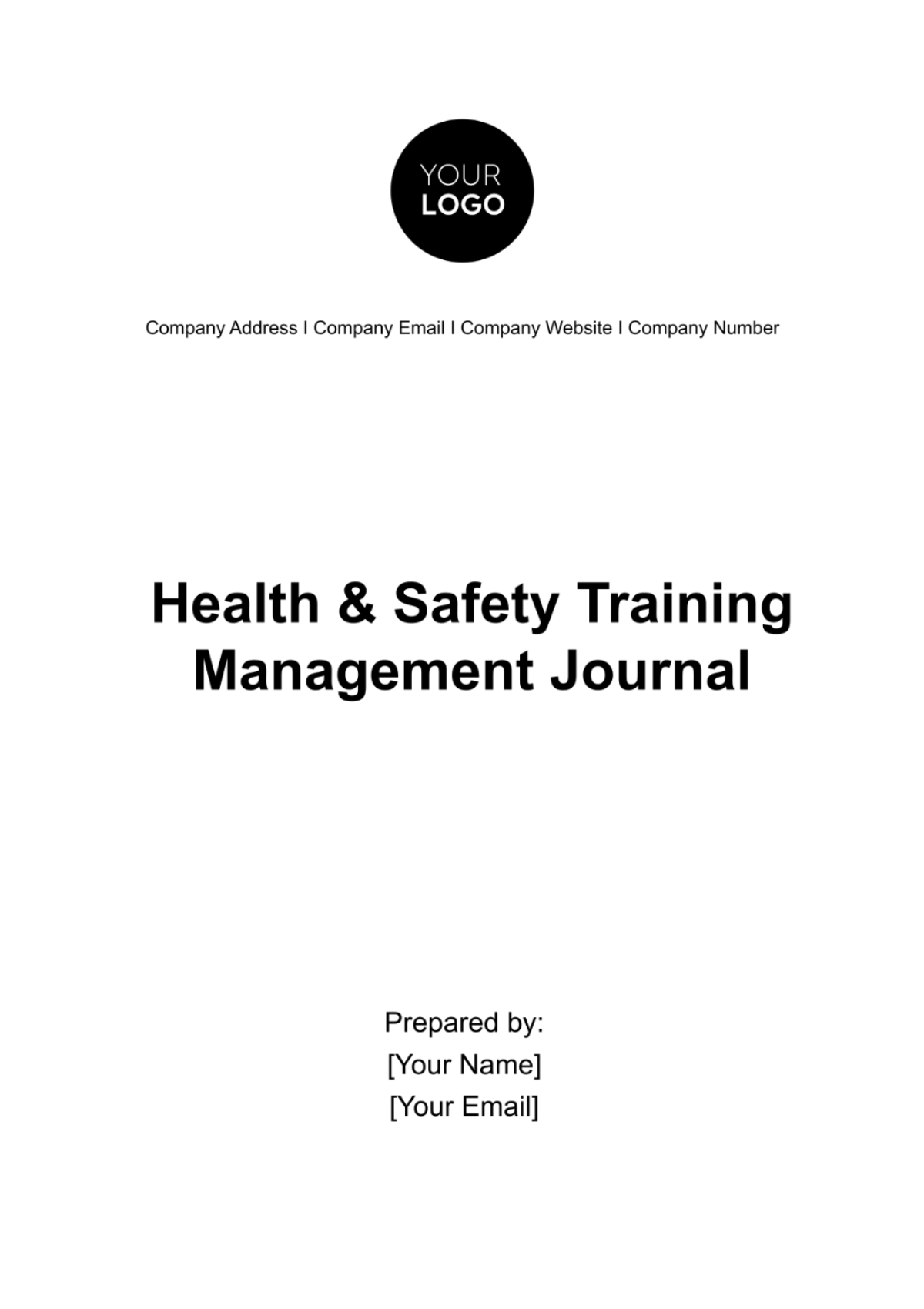
Management Journal
Introduction
A. Background
The Health & Safety Training Management Journal is a comprehensive resource dedicated to advancing the field of workplace safety and health. In today's rapidly evolving work environment, ensuring the well-being of employees and preventing accidents is paramount. This journal is published by [Your Company Name], a leading authority in safety management, with a commitment to promoting best practices and knowledge sharing.
B. Purpose
The primary purpose of this journal is to serve as a knowledge hub for safety professionals, HR managers, trainers, and anyone interested in health and safety training. By providing in-depth insights, case studies, and expert analysis, our goal is to empower organizations to enhance their health and safety training programs.
C. Objectives
Our journal aims to achieve several key objectives:
Disseminate best practices in health and safety training management.
Share real-world case studies and success stories.
Promote a culture of safety within organizations.
Facilitate compliance with relevant health and safety regulations.
Foster innovation in training methodologies.
Provide a platform for collaboration and knowledge exchange.
Health & Safety Training Overview
A. Definition of Health & Safety Training
Health and safety training is a systematic and organized approach to equipping employees with the knowledge, skills, and awareness necessary to perform their job tasks safely. It involves the dissemination of information, practical skills development, and the promotion of a safety-conscious culture within an organization.
Health and safety training encompasses topics such as hazard identification, emergency response, first aid, personal protective equipment (PPE), and safe work procedures.
It is designed to reduce workplace accidents, injuries, and illnesses by educating employees about potential risks and how to mitigate them.
Effective health and safety training can save lives, protect the well-being of workers, and enhance organizational productivity.
B. Importance of Health & Safety Training
The importance of health and safety training cannot be overstated. It plays a pivotal role in safeguarding employees' physical and mental well-being, as well as the overall success of an organization.
According to the Occupational Safety and Health Administration (OSHA), businesses that implement effective safety and health programs can reduce injury and illness costs by 20-40%.
Case studies show that organizations with robust training programs experience fewer workplace incidents, resulting in reduced worker compensation claims and legal liabilities.
Employee morale and job satisfaction often improve in companies where safety is a priority, leading to lower turnover rates and increased productivity.
C. Legal and Regulatory Framework
Health and safety training is governed by a complex web of laws and regulations to ensure workplaces are safe for employees. It's crucial for organizations to understand and comply with these legal requirements.
In the United States, OSHA sets and enforces workplace safety and health standards. Compliance with OSHA regulations is mandatory for many industries.
Other countries have their own regulatory bodies and legislation governing workplace safety. Organizations operating internationally must navigate multiple regulatory frameworks.
Failure to comply with health and safety regulations can result in fines, legal action, and damage to a company's reputation.
Training Needs Assessment
A. Identification of Training Needs
The identification of training needs is a critical step in ensuring that health and safety training programs are effective and relevant. It involves a systematic process of pinpointing areas where employees require specific training to mitigate workplace hazards and risks.
An initial step in identifying training needs is conducting thorough job hazard analysis (JHAs) for different job roles within the organization. This involves evaluating tasks, equipment, and work environments to identify potential risks.
Employee feedback and input play a vital role in identifying training needs. Regular surveys, focus groups, and incident reports can provide valuable insights into where employees feel less confident in their safety knowledge or skills.
Analyzing historical incident data can reveal patterns and trends, helping organizations prioritize training in areas with a higher likelihood of accidents or near-misses.
B. Risk Assessment
Risk assessment is an integral part of the training needs assessment process. It involves evaluating the severity and likelihood of potential risks and incidents.
Risk assessment should consider a wide range of factors, including the type of hazard, exposure duration, and the number of employees affected.
Prioritization of risks is crucial. Organizations often use risk matrices to categorize hazards into low, medium, or high-risk categories, guiding the allocation of resources to address the most significant risks.
Regular updates to risk assessments are necessary as the workplace evolves. New equipment, processes, or changes in regulations may introduce new hazards.
C. Training Gap Analysis
After identifying training needs and assessing risks, organizations must conduct a training gap analysis to determine the existing knowledge and skills of their employees compared to what is required to maintain a safe working environment.
The training gap analysis involves a systematic evaluation of employees' current competencies and the desired level of competency for their roles.
Assessment methods can include skills tests, knowledge quizzes, and practical demonstrations.
The results of the analysis inform the development of targeted training programs that address specific gaps in employee knowledge and skills.
Training Program Development
A. Curriculum Design
Effective curriculum design is fundamental to creating training programs that meet the specific needs of an organization.
Curriculum design begins with defining clear learning objectives that outline what employees should be able to do or understand upon completion of the training.
Content development involves creating instructional materials, including presentations, manuals, videos, and interactive modules.
Sequencing and structuring the curriculum in a logical and learner-friendly manner is crucial. Modules should build upon previous knowledge and skills.
B. Training Materials
Comprehensive and engaging training materials are essential for effective learning.
Training materials should be tailored to the target audience and the specific content being taught. For example, materials for a forklift operator training program will differ from those for office ergonomics training.
Visual aids, such as diagrams, images, and videos, can enhance comprehension and retention of key safety concepts.
Interactive elements, such as quizzes and simulations, provide opportunities for active learning and skills practice.
C. Training Methods
The choice of training methods can significantly impact the effectiveness of health and safety training programs.
Different training methods include classroom instruction, on-the-job training, e-learning platforms, and workshops. The selection depends on the nature of the training and the preferences of the learners.
Interactive and hands-on training methods are often more effective in conveying practical safety skills, while e-learning can be convenient for delivering theoretical content.
Blended learning approaches, combining both in-person and online training, can provide a well-rounded training experience.
D. Training Schedule
The training schedule determines when and how often training sessions are conducted.
Training schedules should consider the availability of employees and minimize disruptions to regular work operations.
Frequency and duration of training sessions depend on the complexity of the subject matter. Some topics may require annual refresher training, while others may be less frequent.
Flexibility in scheduling can accommodate shifts and job rotations to ensure all employees receive necessary training.
E. Resource Allocation
Allocating the necessary resources is crucial for successful training program development.
Resources include budget, personnel, training facilities, equipment, and materials.
Establishing a dedicated budget for training ensures that necessary investments are made to maintain a high standard of safety training.
Qualified trainers and instructors should be assigned to deliver training, and their development and certification should be supported.
Implementation and Delivery
A. Instructor Qualifications
Ensuring that instructors are well-qualified is essential for the successful implementation of health and safety training programs.
Instructors should possess relevant certifications and qualifications related to the specific training they are delivering. For instance, a CPR and first aid instructor should have up-to-date certifications in these areas.
Experienced instructors can bring real-world knowledge to the training environment, enhancing the practicality and relevance of the instruction.
Continuous professional development and training for instructors is crucial to keep their skills and knowledge current.
B. Training Facilities
Creating safe and conducive training environments is vital for effective health and safety training.
Training facilities should be equipped with appropriate safety features, such as fire extinguishers, first aid kits, and emergency exit routes.
Adequate space and seating arrangements should be made to accommodate trainees comfortably and ensure visibility of training materials.
Facilities for practical training, such as mock emergency scenarios or equipment operation, should replicate real workplace conditions as closely as possible.
C. Training Equipment
Properly maintained training equipment is essential for hands-on learning experiences.
Equipment used in training programs should be in good working condition and regularly inspected for safety.
Organizations should invest in up-to-date training aids and simulators to enhance the effectiveness of practical training.
Personal protective equipment (PPE) for trainees should be readily available and fit properly to simulate real working conditions.
D. Training Session Execution
Effective execution of training sessions ensures that participants gain valuable knowledge and skills.
Training sessions should start with clear learning objectives and an outline of what participants can expect to achieve by the end.
Engaging instructional techniques, such as interactive discussions, group activities, and case studies, should be incorporated to maintain trainee interest and participation.
Hands-on practice and skill demonstrations are crucial for reinforcing theoretical knowledge and ensuring competency.
Feedback and Evaluation
Collecting feedback and evaluating training sessions are key to continuous improvement.
Feedback forms should be distributed to trainees at the end of each session to gather input on the effectiveness of the training.
Evaluations should include metrics related to knowledge retention, skill acquisition, and overall satisfaction.
Trainers should review feedback to identify areas for improvement in content delivery, training methods, or materials.
Monitoring and Compliance
A. Tracking Attendance
Tracking and documenting training attendance is crucial for ensuring compliance with regulatory requirements and organizational policies.
An accurate record of participant attendance should be maintained for each training session, including names, dates, and signatures.
Digital attendance tracking systems can streamline the process and provide real-time data on training participation.
Organizations should establish clear procedures for addressing missed training sessions or make-up opportunities for employees who were absent.
B. Compliance with Regulations
Maintaining compliance with health and safety regulations is a fundamental aspect of training management.
Organizations should regularly review and update their training programs to align with changes in laws and regulations.
Compliance checks should be conducted to ensure that training content and delivery methods meet regulatory requirements.
Audits and inspections by regulatory authorities should be welcomed as opportunities to demonstrate commitment to safety compliance.
Documentation and Records
Proper documentation and record-keeping are essential components of training management.
All training records, including attendance sheets, training materials, evaluations, and certifications, should be securely stored and easily retrievable.
Records should be maintained for a defined retention period to meet legal requirements and provide a historical perspective of training efforts.
Accurate documentation allows organizations to demonstrate compliance, track training progress, and identify areas for improvement.
Incident Response and Reporting
A. Reporting Procedures
Efficient and clear reporting procedures for workplace incidents are essential to ensure swift responses and prevent future accidents.
Employees should be educated on how to report incidents promptly, including injuries, near-misses, or hazardous conditions.
Reporting mechanisms can include online forms, dedicated hotlines, or direct contact with supervisors or safety officers.
All reported incidents should be documented, regardless of their severity, to allow for trend analysis and proactive mitigation.
B. Investigation Process
Thorough investigations into workplace incidents help identify root causes and prevent similar occurrences.
Investigations should begin promptly after an incident is reported and involve a multidisciplinary team, including safety professionals, supervisors, and affected employees.
The process should include collecting evidence, interviewing witnesses, and reviewing relevant documents.
Root cause analysis methods, such as the "5 Whys" technique, can be applied to uncover underlying factors contributing to incidents.
C. Corrective Actions
Implementing corrective actions is crucial to prevent the recurrence of incidents.
Based on the findings of incident investigations, organizations should develop and prioritize corrective action plans.
Corrective actions may include changes in procedures, additional training, equipment upgrades, or process redesign.
Timelines and responsible parties for each corrective action should be clearly defined to ensure accountability.
Continuous Improvement
A. Analysis of Training Effectiveness
Continuous improvement involves analyzing the effectiveness of health and safety training programs and making enhancements as needed.
Evaluation metrics, such as post-training assessments, on-the-job performance, and incident rates, should be used to measure the impact of training.
Comparative analysis can help identify trends and areas where training has been particularly effective or needs improvement.
Feedback from participants should be sought to gain insights into their perceptions of training quality and relevance.
B. Feedback from Participants
Feedback from participants is a valuable source of information for refining training programs.
Anonymous surveys or focus group discussions can be conducted to gather feedback from trainees.
Participants' input on the clarity of training materials, effectiveness of training methods, and relevance of content should be considered.
Feedback should be analyzed systematically to identify common themes and areas for improvement.
Review and Update of Training Program
Regular review and updating of training programs are essential to keep them aligned with evolving needs and best practices.
A formal review process should be scheduled at regular intervals, considering factors such as changes in regulations, technology, or workplace conditions.
Subject matter experts and training professionals should collaborate to update training content and materials.
Updates should be communicated to all relevant personnel, and retraining may be necessary for affected employees.
- 100% Customizable, free editor
- Access 1 Million+ Templates, photo’s & graphics
- Download or share as a template
- Click and replace photos, graphics, text, backgrounds
- Resize, crop, AI write & more
- Access advanced editor
Streamline your Health & Safety training management with Template.net's Health & Safety Training Management Journal Template. This editable and customizable template, enhanced with our Ai Editor Tool, offers seamless organization and tracking. Effortlessly manage training sessions and records, ensuring compliance and safety standards are met effectively. Elevate your safety protocols with Template.net's innovative solution.
